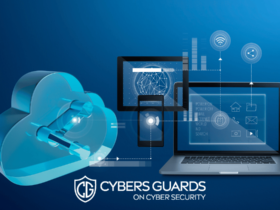How to Practice Cybersecurity?- Cybersecurity isn’t only about a single threat or a single firewall problem on a single PC. It’s all about zooming out and obtaining a wider picture of what’s going on in the IT world.
It’s no longer merely a technical matter of having the necessary defensive technology in place to keep companies safe from attacks. This, in my opinion, is IT security training, which is still necessary but does not address what occurs after the attackers have gained access to your network (and they will, despite your best efforts to keep them out).
I’m trying to raise awareness about this issue so that security teams, business executives, and corporate boards understand that IT security won’t protect them once an attacker has gained access to a target. When this occurs, cybersecurity will be essential.
In cybersecurity, defenders admit that sophisticated attacks are being launched by highly determined and inventive attackers. It’s also worth noting that when software is employed as a weapon, erecting a larger or stronger wall may not be enough to keep the bad guys out. More protective measures, they believe, give them more chances to locate weak points and gain access to a network.
This mindset runs counter to the basic idea of IT security, which is to build several defensive layers around whatever it is you’re trying to defend. You keep what you’re attempting to safeguard safe by separating it from the outside world—at least in theory. While this works in physical security, where IT security has its roots, it doesn’t work when you’re dealing with adversaries who only need to succeed once to complete their purpose. Defenders, on the other hand, do not have this luxury. They must always be able to catch every onslaught. This isn’t meant to be a criticism of antivirus software, firewalls, or other defensive technologies; they’re still necessary in the context of cybersecurity.
Cybersecurity Means Looking for Attacker Footholds, Not Malware
In addition, there are differences between IT security and cybersecurity in terms of what to do if an intruder gets past your safeguards. When a problem is discovered on a single computer, it is referred to as an isolated incident, and the impact is limited to that system.
This is how a typical scenario plays out: On the controller’s PC, for example, malware is identified. The system is disconnected from the network and maybe re-imaged by an IT administrator or a junior security analyst. Maybe there’s an investigation into how the machine became infected, and the culprit turns out to be a misconfigured firewall. As a result, the firewall configuration has been modified, the threat has been neutralised, the issue has been resolved, and a ticket has been closed. This equals success in IT security, where a speedy resolution of an event is necessary.
Here’s how that identical issue would be handled in terms of cybersecurity. The investigation team does not believe the malware infection is limited to a single PC. They also wouldn’t be so quick to clean the machine. They might let the malware run for a while to see how it behaves and where it calls home.
Most importantly, the episode would not be viewed as a one-time occurrence. When looking at occurrences through a cybersecurity lens, it’s common to believe that each one is part of a broader, more intricate attack with a much more ambitious purpose than infecting machines with malware. You’re not doing your job if you close a ticket without examining how an incident or incidents are linked (remember, assaults have multiple components and adversaries frequently move around) or where else attackers could have acquired a foothold.
To practise cybersecurity, zoom out
The first step in practising cybersecurity is for security staff to shift their mindsets about how they manage threats. To begin, they must be encouraged to spend time looking for a full-blown attack in their environment rather than immediately closing tickets. They must also realise that cybersecurity isn’t only about a single threat or a single firewall issue on a single PC. That viewpoint is far too narrow. To get a better picture, zoom out.
This is, without a doubt, a significant shift from how most businesses now handle security. The fact that what I’m proposing cannot be studied in classrooms or professional development courses further complicates this viewpoint. When it comes to cybersecurity, the old adage “experience is the greatest teacher” holds true. Step one is to think like a detective and ask questions regarding the incident, such as why this attack vector was utilised, are there any suspicious activity (however little) occurring elsewhere in my IT infrastructure, and why would attackers choose our company as a target.
The distinction between cybersecurity and IT security is this big-picture thinking. Big picture thinking will also aid organisations in detecting and stopping attackers once they have gained access to a company.











Leave a Reply